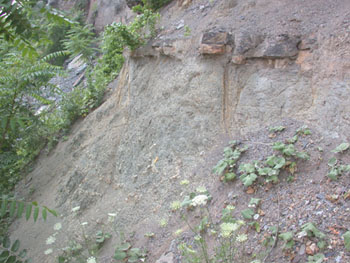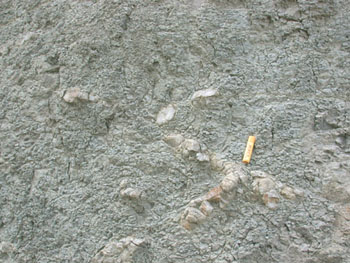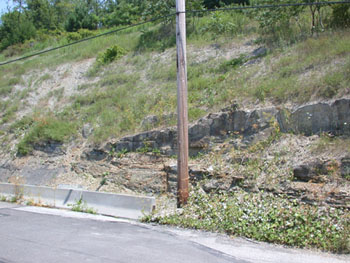Mudstone/Shale vs. Limestone
| Both limestone and mudstone/shale can ve very fine grained, so how do you tell them apart? Well, shales tend to break into thin, angular pieces whereas limestones tend to break into hard blocks. While mudstones also break into blocky pieces, they tend to be quite soft. You can rub dirt off of a mudstone whereas a limestone can rub your skin off of you!
In outcrop, the greater fragility of mudstone and shale means that limestones (and sandstones and conglomerates) make layers that are more resistent to weathering. Mudstones and shales tend to form vegetated slopes whereas the other rock types can form cliffs and resistent beds.
|
|
Most of the outcrop is mudstone. The bed that sticks out: it is a thin limestone. If you are really interested in studying some shales, you are faced with digging or hiring a drilling rig to make a core.
|

|
|
This mudstone contains irregular hard blobs called nodules or concretions. When broken open, they reveal fine-grained textures. When a drop of acid is applied, they fizz. Thus, these are limestone nodules.
|

|
|
Shales and mudstones quickly weather to create gentle slopes. The resistent bed on the right is a sandstone. The light gray, slope-forming, partially vegetated rock to the upper left is a mudstone.
|

|
|



